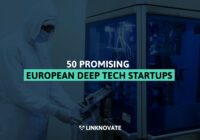In the fast-paced world of patent research, the ability to efficiently navigate through vast repositories of intellectual property is crucial for innovation and progress. Traditionally, patent professionals have relied on manual keyword selection processes, which can be time-consuming and prone to human error. However, with recent advancements in natural language processing (NLP), a new era of automation has emerged, offering transformative solutions to streamline patent discovery.
In this landscape of innovation, the emergence of models such as docT5keywords signals a significant breakthrough. Built upon the renowned T5 architecture and fine-tuned specifically for generating keywords for scientific documents, docT5keywords represents a revolutionary approach to patent keyword generation. By harnessing the power of machine learning and semantic understanding embedded within T5, this model offers patent professionals a sophisticated tool for automating keyword generation, thereby enhancing efficiency and unlocking new opportunities for innovation and collaboration in patent research.

Understanding docT5keywords
In the vast landscape of natural language processing (NLP), the T5 architecture has emerged as a beacon of innovation. Developed by Google, T5 (Text-To-Text Transfer Transformer) represents a milestone in NLP, offering a unified framework for a wide range of text-based tasks. From translation to summarization, T5 has demonstrated remarkable versatility and effectiveness across various domains.
docT5keywords builds upon this foundation, harnessing the power of the T5 architecture to address a specific challenge: keyword generation. Unlike traditional keyword extraction methods that rely on predefined rules or statistical techniques, docT5keywords takes a novel approach by treating keyword generation as a text-to-text task. By framing keyword generation in this manner, the model can learn to generate keywords directly from the textual content of documents even if they are not present in the input text.
At its core, docT5keywords operates on the principle of transfer learning, a technique that leverages pre-trained models to adapt to specific tasks or domains. In the case of docT5keywords, the model is fine-tuned using a large corpus of scientific documents and their associated keywords. This process allows docT5keywords to learn the intricate relationships between the textual content of patents and their corresponding keywords, enabling it to generate relevant and accurate keywords for patent documents.
By adopting the T5 architecture, docT5keywords offers several key advantages. First and foremost is its flexibility and adaptability. The modular nature of the T5 architecture allows researchers to fine-tune the model for various datasets with relative ease, making it suitable for a wide range of applications. Additionally, T5’s strong performance on benchmark datasets and its ability to capture semantic relationships between words and phrases make it an ideal candidate for keyword generation tasks where context and meaning are paramount.
In summary, docT5keywords represents a pioneering approach to keyword generation, leveraging the power of the T5 architecture to automate and streamline the process.
The Power of Automation
In the realm of patent discovery, efficiency is paramount. Manual keyword selection processes, while once the standard, are increasingly impractical in today’s fast-paced research environment. Herein lies the transformative power of automation, and at the forefront of this revolution stands docT5keywords.
By automating the keyword generation process, docT5keywords offers patent professionals a streamlined approach to patent research. Gone are the days of painstakingly sifting through documents to manually extract relevant keywords. With docT5keywords, patent professionals can simply input the text of a patent document, and within moments, receive a comprehensive list of keywords tailored to the document’s content.
This automation not only saves time but also enhances the accuracy and consistency of keyword generation. Human annotators may inadvertently introduce biases or inconsistencies into the keyword selection process, leading to discrepancies in patent categorization and search results. In contrast, docT5keywords operates based on learned patterns and statistical analysis, ensuring a high degree of objectivity and uniformity in keyword selection.
Moreover, the automation of keyword generation opens up new possibilities for patent research and exploration. By significantly reducing the time and effort required to generate keywords, docT5keywords empowers patent professionals to explore a broader range of patents and uncover valuable insights and opportunities for collaboration. This increased efficiency not only accelerates the pace of innovation but also fosters a culture of knowledge-sharing and interdisciplinary cooperation within the research community.
In essence, docT5keywords represents a paradigm shift in patent discovery, harnessing the power of automation to streamline workflows, improve accuracy, and unlock new opportunities for innovation and collaboration. As the field of natural language processing continues to advance, the integration of automated keyword generation into patent research processes promises to revolutionize the way we discover, analyze, and leverage intellectual property.

Enhancing Patent Exploration
The advent of docT5keywords not only streamlines the patent research process but also enhances the depth and breadth of patent exploration. By automating keyword generation with unprecedented accuracy and efficiency, docT5keywords empowers patent professionals to delve deeper into patent databases and uncover valuable insights that may have previously remained hidden.
One of the key advantages of docT5keywords is its ability to generate a comprehensive list of keywords tailored to the content of a patent document. This allows patent professionals to explore a broader range of patents with greater precision, ensuring that no relevant documents are overlooked. Whether searching for patents within a specific technological domain or conducting a comprehensive landscape analysis, docT5keywords provides the necessary tools to navigate patent databases with ease and confidence.
Moreover, the generated keywords serve as valuable entry points for deeper analysis and exploration. Patent professionals can use these keywords to identify patents of interest, track emerging trends, and assess the competitive landscape within a particular field. By leveraging the insights gleaned from keyword-generated patents, researchers can make more informed decisions, identify potential collaboration opportunities, and drive innovation forward.
In summary, docT5keywords enhances patent exploration by providing patent professionals with a powerful tool for generating accurate and comprehensive keywords. By automating keyword generation with unparalleled efficiency, docT5keywords enables researchers to explore patent databases with greater precision, uncover valuable insights, and identify opportunities for collaboration and innovation. As we continue to harness the capabilities of NLP technologies like docT5keywords, the future of patent exploration is brighter than ever, with promising discoveries and advancements that will shape the intellectual property landscape for years to come.
Facilitating Innovation and Collaboration
docT5keywords empowers patent professionals to stay abreast of emerging trends and developments within their field. By generating keywords that capture the essence of a patent’s content, docT5keywords enables researchers to identify groundbreaking innovations and technologies that have the potential to shape the future. This insight not only informs research priorities but also helps researchers anticipate future challenges and opportunities in their respective fields.
Furthermore, docT5keywords serves as a valuable resource for patent professionals seeking to leverage existing intellectual property to drive innovation forward. By providing accurate and comprehensive keyword-generated patents, docT5keywords enables researchers to identify opportunities for licensing, collaboration, and technology transfer. This not only accelerates the pace of innovation but also facilitates the translation of research into real-world applications, ultimately benefiting society as a whole.
In addiction, it facilitates cross-disciplinary exploration by uncovering patents that may be relevant across multiple domains. By generating keywords that capture the essence of a patent’s content, docT5keywords enables patent professionals to identify connections and similarities between seemingly disparate technologies. This cross-pollination of ideas not only fosters innovation but also opens up new avenues for collaboration and knowledge sharing across different fields of research.
To sum up, docT5keywords plays a pivotal role in facilitating innovation and collaboration within the research community. By automating keyword generation with unparalleled accuracy and efficiency, docT5keywords empowers patent professionals to explore patent databases, uncover valuable insights, and identify opportunities for collaboration and innovation. As we continue to harness the capabilities of NLP technologies like docT5keywords, the potential for driving progress and prosperity in intellectual property management is limitless.

In conclusion, docT5keywords represents a paradigm shift in patent discovery, offering patent professionals a powerful tool for automating keyword generation. By leveraging the capabilities of the T5 architecture, docT5keywords streamlines patent research workflows, enhances efficiency, and facilitates greater collaboration and innovation. As we continue to embrace the possibilities of NLP technologies, the future of patent discovery is brighter than ever, with docT5keywords leading the way towards a more efficient and collaborative intellectual property landscape.
This study has been led under the project “Intelligent text mining methods for radical search improvement in Technology Watch” (2021/C005/00150574) funded by The Ministry of Science (MCIN/AEI/10.13039/501100011033) and the European Union (NextGenerationEU/PRTR).






